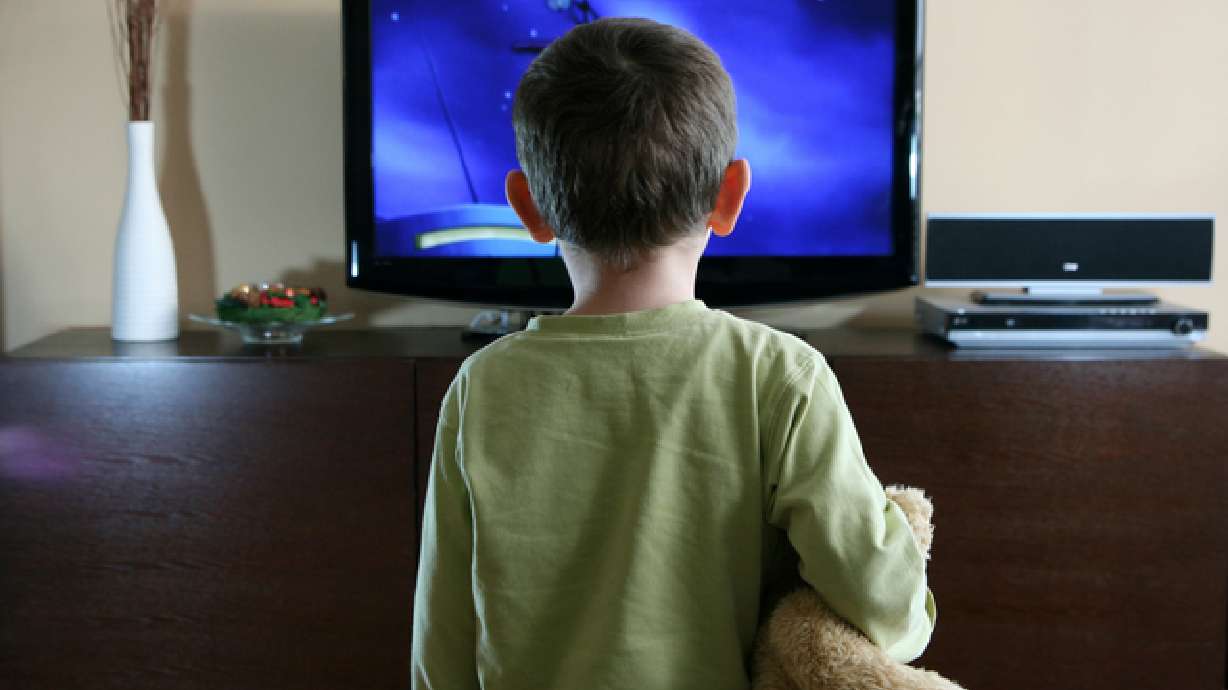Estimated read time: 5-6 minutes
This archived news story is available only for your personal, non-commercial use. Information in the story may be outdated or superseded by additional information. Reading or replaying the story in its archived form does not constitute a republication of the story.
It's Saturday morning and your child demands marshmallow cereal and Kool-Aid for breakfast.
Later at the shoe store he throws a tantrum because he can't have a pair of expensive character shoes, and at lunch time he screams for fast food, complete with a toy and a soda.
Is it the influence of his friends or is it in his genes? New research suggests that this universal parent-child struggle may actually be due to the number of commercials your child watches on TV.
The average American child sees 40,000 commercials per year. -The Nielsen Company
Children today are bombarded by ads in magazines, on the radio and TV, and online with television advertising being the most prevalent.
According to The Nielsen Company, retailers spent $69 billion in television advertising in 2010 — more than any other method.
The reason? Americans watch more TV than ever before. In fact, The Nielsen Company has found that children ages 2-5 now watch 32 hours of television each week, while children ages 6-11 spend 28 hours in front of the TV. If commercials account for approximately 20 percent of that time, which is common on live TV, children are watching six hours of advertising per week. The American Academy of Pediatrics estimates that the average American child sees 40,000 commercials per year.
Of these commercials, about half are advertising food, which is usually cereal, fast food and junk food. Some advocacy groups believe that TV advertising to children is a major reason for increasing childhood obesity rates.
Related:
A landmark study done by the National Bureau of Economic Research concluded that, if food advertising to children were banned in America, childhood obesity rates would fall by 18 percent. But until that happens, retailers continue to advertise to children simply because it works. They know that children have a high degree of influence when it comes to purchases.
According to The Nielsen Company, the problem with this is that the younger the child, the more likely he or she is to believe the claims of advertisers. Unfortunately, the majority of children under age six do not even understand that commercials exist to sell a product. However, many do understand the difference between entertainment and commerials.
Even in the 1980s, one research study of 5-year-olds concluded that 80 percent of the children could identify when a commercial came on, but 90 percent of them didn't know the purpose of the commercial itself.
Children ages 2-5 watch 32 hours of TV each week, while children ages 6-11 spend 28 hours in front of the TV. -The Nielsen Company
While 97 percent of children see the ads on live TV, some parents try to minimize exposure by using a DVR system, allowing the child to skip commercials. This method can cut down on the number of ads, but according to Nielsen, children ages 2-5 still see 50 percent of the commericals when the show is played back. This may because the younger kids don't know how to use the technology by themselves yet or perhaps it is because they simply don't mind watching.
So what's a parent to do? Is there a way to eliminate the ads altogether?
Neale S. Godfrey, author of "Money Doesn't Grow on Trees: A Parent's Guide to Raising Financially Responsible Children" says that we need to change our mindset. Rather than banning advertising, we should be educating our children.
"I maintain that we need to teach our children about advertising, what a commercial is and what it is trying to accomplish," she stated. "You can’t be coerced into doing something you don’t want to do if you know and understand the process."
Retailers spent $69 billion in television advertising in 2010. -The Nielsen Company
Many advocacy groups agree that watching TV with your child can be a powerful tool. When commercials come on, it can be effective to ask questions such as "What is the purpose of this ad? Why do they say their product is the best? Do you agree?" When you challenge advertising, you show your child that it is acceptable — even expected — to question claims made by advertisers.
It can also be helpful to educate your child about the retailers' methods.
A picture of Hannah Montana, for example, does not necessarily mean that the shoe is comfortable and durable (sometimes called the "celebrity" method), just as a group of happy teens dancing around on the screen don't guarantee that the drink tastes good and has nutritional value (often termed the "bandwagon" method).
Educating children about advertising can be done in front of the TV, at the computer while researching products or even at the grocery store.
While teaching about the world of retail is important, perhaps the most important discussion to have with your child is how to stay safe. Some children unknowingly give away personal information such as addresses, phone numbers, birthdates and occasionally even credit card numbers to 1-800 numbers or websites. Instructing children about discussing such things with adults can be vital to your family's privacy and well-being.
When all is said and done, children will be making purchases of their own someday, and we can only imagine that their world will be even more commercialized than it is today.
If a little education results in a child challenging retailers rather than their parents, it will have been well worth the effort.
Rebecca Rode has three children and has previously written for Schooled Magazine.









